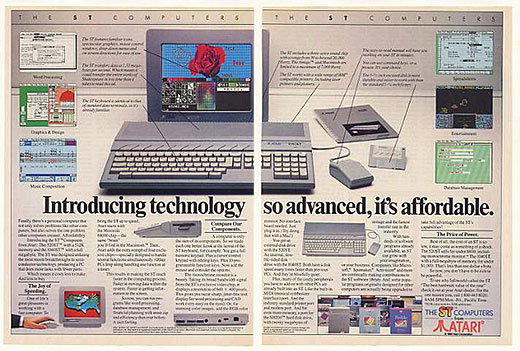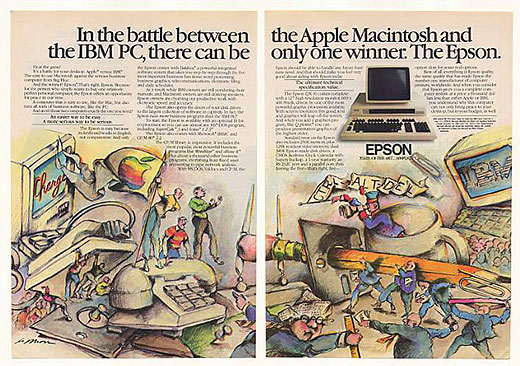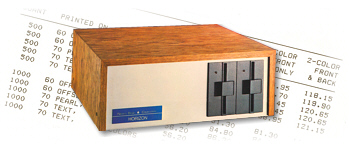I'm surprised people still worked like that towards the end of the Eighties. Did people still see any future in that?..we got to use the mighty Honeywell BULL mini computer, where people in white coats flitted round typing in the code you provided on paper because the damn thing didn't have enough runtime to share itself with all the class members..
Bull: http://upload.wikimedia.org/wikipedia/c ... l-bull.jpg
Reminds me of an SX64. Wonder if it was as much fun for the users.
I'm interested to note this division between serious and popular computing back then, with the serious people looking down on the popular users and their machines as too frivolous. Ian McNaught Davis said that games were a waste of good computers on the BBC's Computer Programme. But the popular users brought the money in and drove developments of multimedia and stuff. I'm glad the Amiga and ST rivalled some workstations at a fraction of the cost as things wouldn't have become more fabulous just for the hell of it.
So I'm humbled to think about things like that and how building on the capability of toys gave us the thrilling apps we have now.

And I'm also humbled at the turbo rate of progression in just five years even then. Just three years after the fabulous Intellivision, groundshaking 64 and price-busting Spectrum came the mindblowing awesomeness of the ST and Amiga classes.

Lovely ads: http://www.stformat.com/page_scans/stf15_ad_atari.jpg
http://www.stformat.com/page_scans/index.html
http://www.retroexperience.com/#/printe ... 4557520441
http://gadgets.boingboing.net/2008/08/0 ... .html#more
http://oldmagazineads.blogspot.com/2010 ... chive.html
http://www.papergreat.com/2012/01/adver ... ue-of.html
http://gigan.livejournal.com/136664.html
http://www.jeuxvideovintage.com/categor ... 9rence__70
Includes some nice synthy ones too: http://www.boogie80.com/gallery/80s-vintage-ads/
Dammit, a whole Google Images list: https://www.google.co.uk/search?q=atari ... 52&bih=773

Little bit of hubris mate, just a little.
I think there were other crossovers too. This page lists an incredible mountain of BBC Micro add-ons, proving you could do egghead, multimediary and full networky stuff, even with a pixelly, brash fun machine: http://www.8bs.com/seedrives.htm
An unusual crossover was of Bill Gates endorsing the Tandy: http://www.vintageadbrowser.com/compute ... -ads-1980s
And I think type-in listings were something of a crossover, as kids felt it would help knowing more about their machines to have extra fun. Though I'm certainly glad habits like that died a death. Life's too short to have to do your own routines for computing nowadays.
http://www.simon.mooli.org.uk/AF/article/magazine.htmlAt the end of the interview for Retro Gamer magazine, Andy asked "What was your worst experience with a type-in listing magazine?"
It was Sportscene (Your Spectrum) garbling part 2 of the Zip Compiler series. I got lots of angry letters, and I'd bust a gut to produce the article so I was really upset when that - and various other typos introduced in production - happened. Still, it probably boosted sales of the optimised tape version (about 1,600, first time around - rather more for various updates, since), as noted on the commercial page.
Though one thing the serious machines had going for them was the sheer horsepower needed for such monster numbercrunching. Not to mention the uncompromised storage and comms equipment. Even the terminals would have seemed jet-propelled, though overly cumbersome to run. How Vic or Spectrum users must have sometimes dreamed of having computers with 8 meg hard drives, 256K RAM and processors clocking in at over 4 megs. (But then again, perhaps not. Software was designed to keep within the limits, though cooler games could have been written.)
And I wonder how many devices will continue to become icons.

Woodgrain floppy drive.
The WINCHESTER: http://ns1758.ca/winch/winche02.html
1980 computer shop guide. Little did they do what came next: http://archive.org/details/Affordable_C ... _Computers




